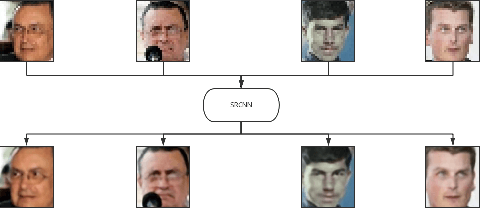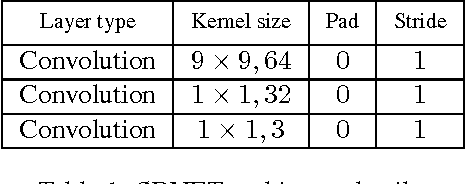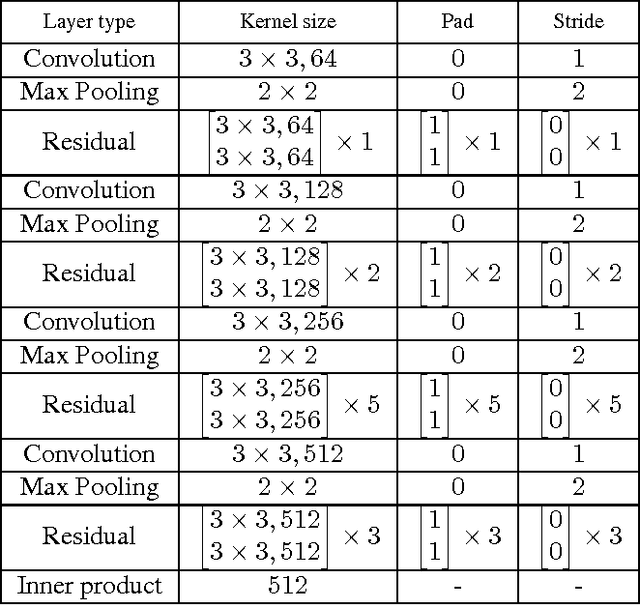Deep Joint Face Hallucination and Recognition
Paper and Code
Nov 24, 2016



Deep models have achieved impressive performance for face hallucination tasks. However, we observe that directly feeding the hallucinated facial images into recog- nition models can even degrade the recognition performance despite the much better visualization quality. In this paper, we address this problem by jointly learning a deep model for two tasks, i.e. face hallucination and recognition. In particular, we design an end-to-end deep convolution network with hallucination sub-network cascaded by recognition sub-network. The recognition sub- network are responsible for producing discriminative feature representations using the hallucinated images as inputs generated by hallucination sub-network. During training, we feed LR facial images into the network and optimize the parameters by minimizing two loss items, i.e. 1) face hallucination loss measured by the pixel wise difference between the ground truth HR images and network-generated images; and 2) verification loss which is measured by the classification error and intra-class distance. We extensively evaluate our method on LFW and YTF datasets. The experimental results show that our method can achieve recognition accuracy 97.95% on 4x down-sampled LFW testing set, outperforming the accuracy 96.35% of conventional face recognition model. And on the more challenging YTF dataset, we achieve recognition accuracy 90.65%, a margin over the recognition accuracy 89.45% obtained by conventional face recognition model on the 4x down-sampled version.
 Add to Chrome
Add to Chrome Add to Firefox
Add to Firefox Add to Edge
Add to Edge